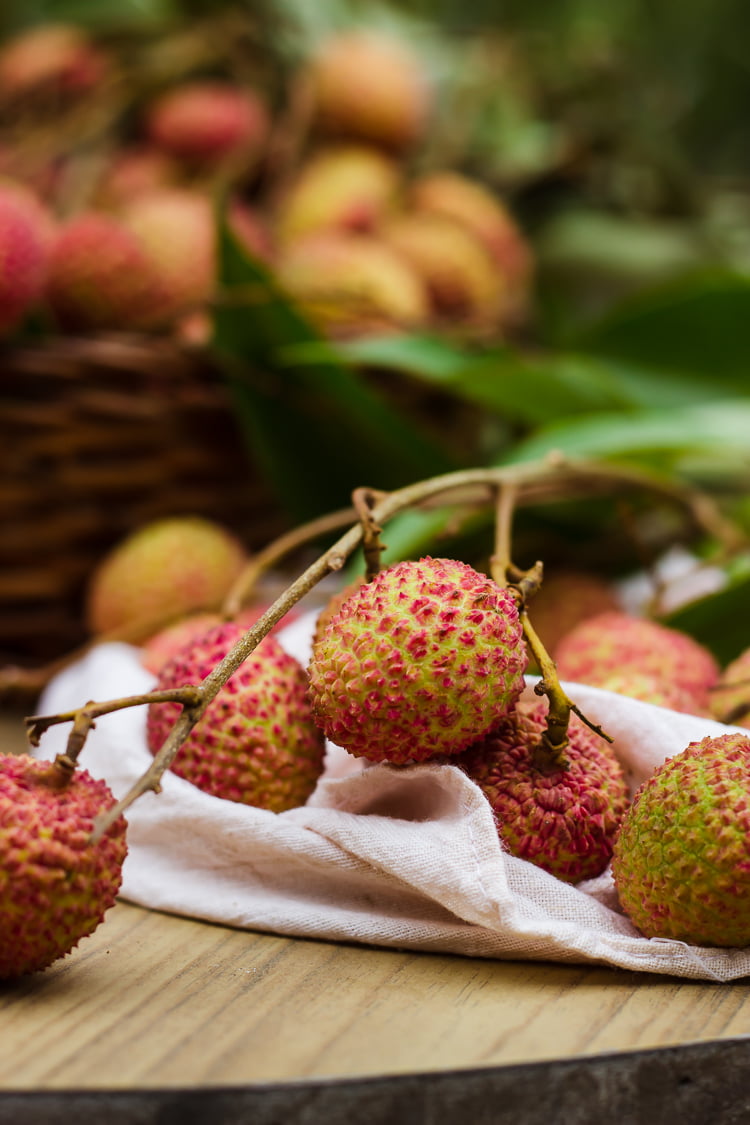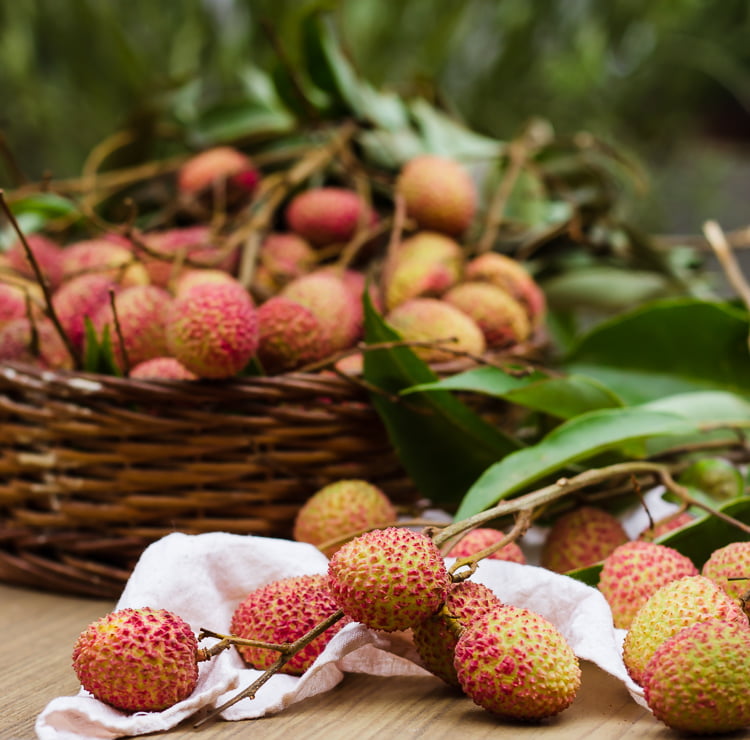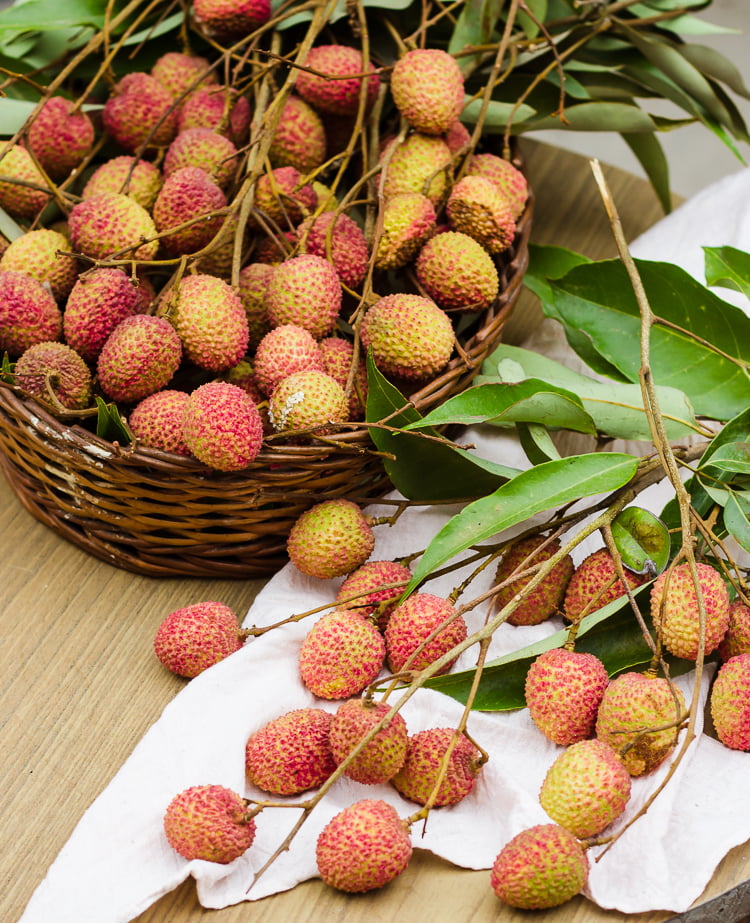When I am asked what is my favorite fruit, my answer is always – Litchis (Lychees) and Grapes. And I get to indulge in both of them when I am visiting home.
Homegrown and organic produce is THE rage these days. And should be justifiably so and probably even more emphatically. With the growing concern about the use of chemicals, fertilizers & pesticides in our crops including artificial means to ripen fruits & vegetables and adulterated groceries, it is time may be to go back to our roots and harvest our own food.
In today’s lifestyle and space limitations of apartments, we are not able to maintain lavish kitchen gardens but I believe starting somewhere is good.
Always with immense satisfaction, I eat home-grown produce, and when that produce includes fruits like Grapes, Kala Jamun, Mango or Litchis then, the experience doubles and trebles. As a child, I have grown up on so many home-grown fruits and vegetables that today eating mandi bought produce is never that good. One always feels that this mango is too big or too early to be naturally produced or such things for other fruits as well.
These fruits bring me some more bittersweet memories to indulge in each year. They add to the love I feel for my place and the sense of belongingness I seek. There is no bigger blessing than being able to enjoy fresh produce in today’s day and age.
How it looks
Litchi fruit is round to oval in shape and has a rough sandpapered texture upon touch. A ripe litchi is pink to red in color. Once peeled, the interior of the fruit is whitish, semi-transparent (or murkish), and juicy. Each fruit carries one shiny, dark brown seed. It is grown on an evergreen tree.
What is the best season
Lychees are typically in season from May to June, just before rainfall begins in northern states of India.
How to choose
Lychees with bright red skin and fresh looking should be chosen. The rough outer covering should slide a little when pressed – this indicates it’s a perfectly ripe stage. But if it’s too soft then chances are that it’s overripe. The fruit which has a floral smell should be selected to eat.
Why to eat
Lychee offers multiple health benefits including goodness for skin to improved immunity. It is rich in vitamin C, vitamin D, magnesium, riboflavin, copper, phosphorus, and water. It promotes weight loss as it is full of fibre and has high water content. Vitamin C found in lychees improves skin health and prevents the signs of aging. Antioxidants present in it are helpful in fighting oxidative stress.
Eating litchi is known to boost immunity due to vitamin C – which is a great immunity booster. This delicious fruit contains potassium which is necessary to regulate blood pressure.
Fibre-rich lychee helps in regulating bowel movements and aids digestion. It is useful in the prevention of common digestive issues like constipation.
Where to find
Lychees are commonly grown in southern China, Taiwan, Vietnam, and the rest of tropical Southeast Asia, the Indian Subcontinent, and in tropical regions of many other countries. They thrive in a tropical climate that is frost-free and the temperature doesn’t fall below −4 °C (25 °F).
When to eat
Litchis should be eaten after breakfast or lunch during the season. Lychees should be properly ripe when eaten. It should not be consumed on an empty stomach or when they are unripened. Studies have shown that when lychees were consumed on empty stomachs by impoverished children of some Indian states, they experienced severe vomiting, and a drop in blood sugar which in some cases led to coma or even death.
How to eat
Lychee is largely enjoyed fresh and raw on its own. It also makes for a great addition to fruit salads, sauces, desserts, and beverages.
What Ayurveda says
As per Ayurveda one should not combine milk with citrus or acidic food. Fruits rich in Vitamin C are citric and should not be combined with milk. Lychees are rich in Vit C & hence they should also not be mixed with milk for consumption. It is believed that milk takes longer to digest and stays in the stomach for a longer duration. When milk and citrus fruit are mixed together the milk coagulates which can lead to gas and heartburn.
Lifespan
Lychee is a highly perishable fruit and lasts for only 2-3 days at room temperature. It should be eaten fresh from the trees as soon as they are plucked.
For longer shelf life, you can keep litchi refrigerated. Lychees fast lose moisture, so it is always recommended to keep them moist by spraying them with water regularly. This helps in maintaining their skin color.
Amazing Facts
Lychee is known as the ‘queen of fruits’ as it is packed with nutrients.
In English, litchi stands for ‘gift for loyal life’ – with its ample health benefits, it is a very apt name.
The dark brown seed inside the whitish translucent flesh of litchi is actually harmful to the digestive system and should not be consumed.






